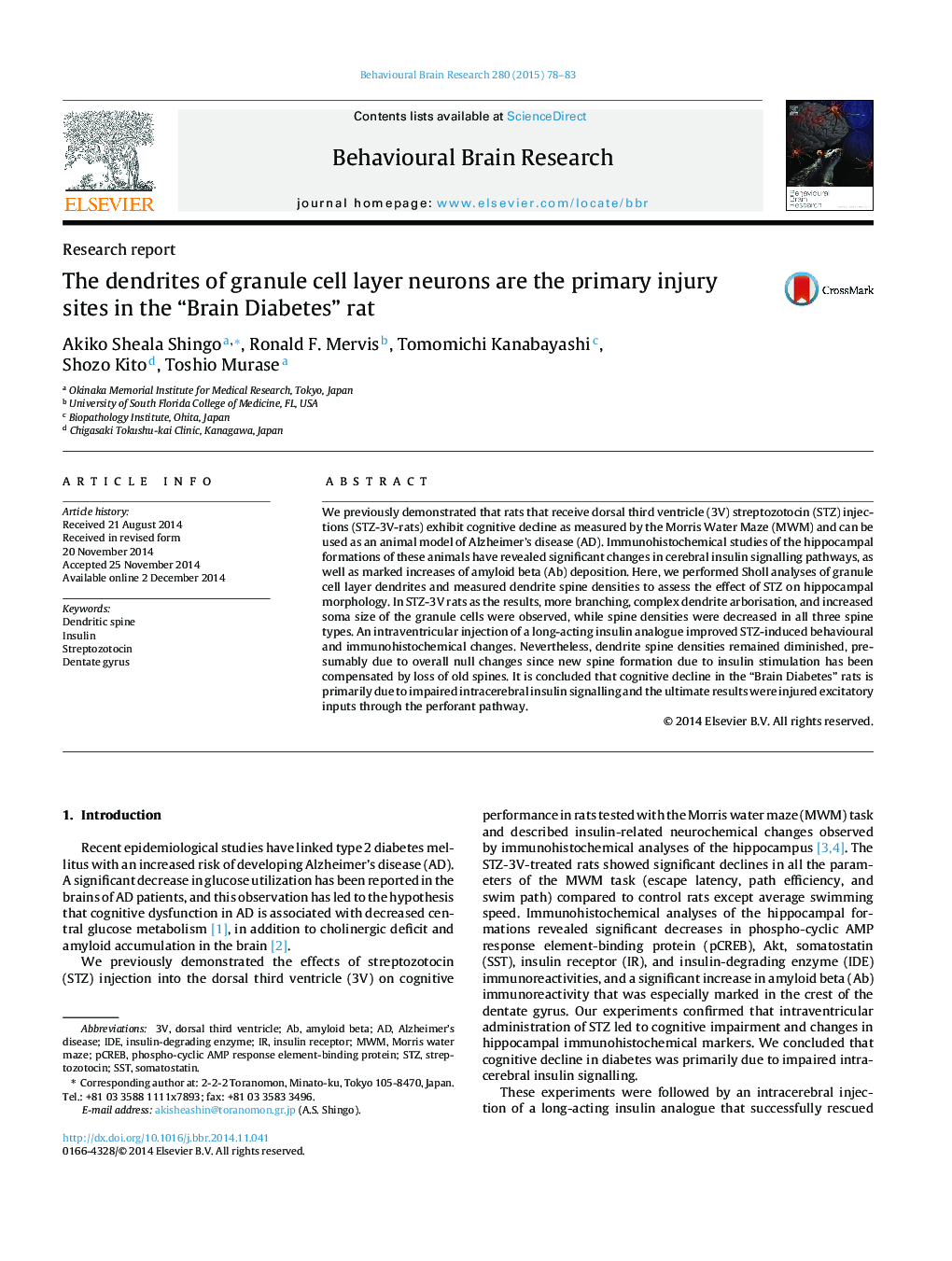| Article ID | Journal | Published Year | Pages | File Type |
|---|---|---|---|---|
| 6256842 | Behavioural Brain Research | 2015 | 6 Pages |
We previously demonstrated that rats that receive dorsal third ventricle (3V) streptozotocin (STZ) injections (STZ-3V-rats) exhibit cognitive decline as measured by the Morris Water Maze (MWM) and can be used as an animal model of Alzheimer's disease (AD). Immunohistochemical studies of the hippocampal formations of these animals have revealed significant changes in cerebral insulin signalling pathways, as well as marked increases of amyloid beta (Ab) deposition. Here, we performed Sholl analyses of granule cell layer dendrites and measured dendrite spine densities to assess the effect of STZ on hippocampal morphology. In STZ-3V rats as the results, more branching, complex dendrite arborisation, and increased soma size of the granule cells were observed, while spine densities were decreased in all three spine types. An intraventricular injection of a long-acting insulin analogue improved STZ-induced behavioural and immunohistochemical changes. Nevertheless, dendrite spine densities remained diminished, presumably due to overall null changes since new spine formation due to insulin stimulation has been compensated by loss of old spines. It is concluded that cognitive decline in the “Brain Diabetes” rats is primarily due to impaired intracerebral insulin signalling and the ultimate results were injured excitatory inputs through the perforant pathway.
